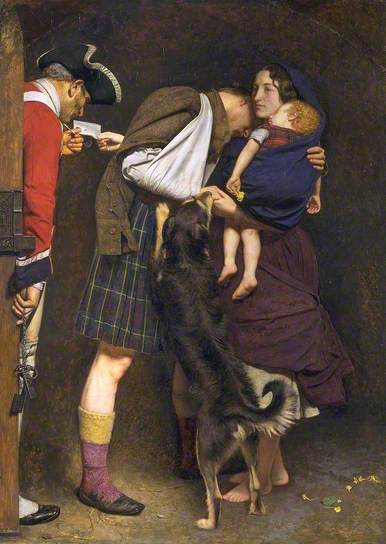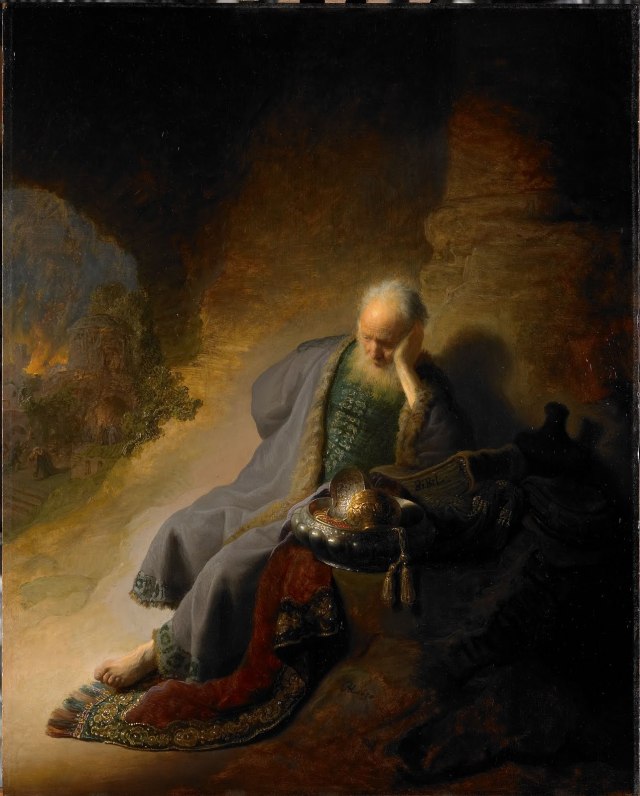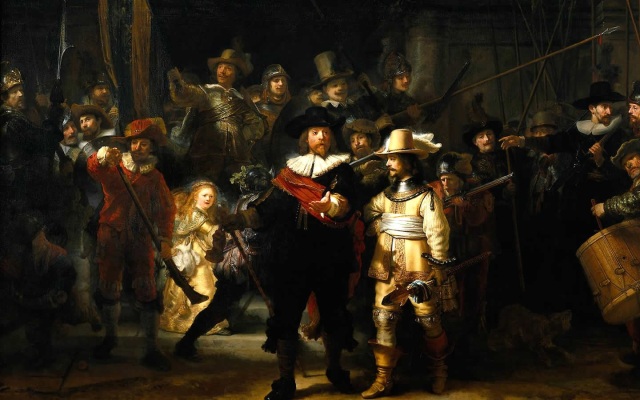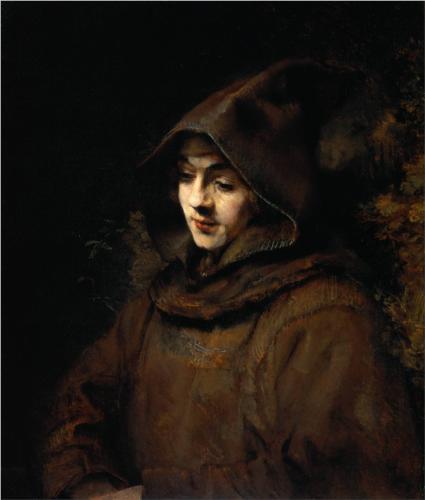Friday Jan 31st was “Inspire Your Heart with the Arts” day, so I was inspired to write another art post, as I haven’t done one since last fall. Sorry for the delay in posting it but with work and real life, I’ve been swamped. I’ve been wanting to write about an art post about John Everett Millais for awhile now, ever since listening to the audiobook biography about his wife Effie Gray and their relationship back in October. I’ve known about his work since my undergraduate career but never really thought too much of it. I mean it was nice, but I preferred Dante Gabriel Rossetti or Edward Burne-Jones more. The audiobook definitely gave me more of an appreciation for his work though, and made me want to study it further.
John Everett Millais was part of the Pre-Raphaelite Brotherhood (or PRB). As I have said in a previous post, They called themselves “Pre-Raphaelite” because the artists in the group imitated artwork done in the Medieval through Renaissance style before Raphael. According to the Metropolitan Museum of Art’s website on the Brotherhood, it was:
“an art characterized by minute description of detail, a luminous palette of bright colors that recalls the tempera paint used by medieval artists, and subject matter of a noble, religious, or moralizing nature. In mid-nineteenth-century England, a period marked by political upheaval, mass industrialization, and social ills, the Brotherhood at its inception strove to transmit a message of artistic renewal and moral reform by imbuing their art with seriousness, sincerity, and truth to nature.”
One of his most famous paintings done during his time with the PRB, and the one usually recognized by the most people, was Ophelia. Despite the fact that it was rejected by critics when it was originally created, it has been voted the public’s all-time favorite PRB painting in Tate Britain, where the painting currently resides. I personally think there are better more interesting PRB paintings out there but that’s just my opinion. However, I will say that he is excellent at painting the coloring in her face, really makes her look alive (close-up of her face shown here). The subject matter was taken from the Shakespeare play Hamlet. The painting shows the moment that Ophelia has gone crazy after Hamlet, her lover, killed her father Polonius. She has fallen into the water after collecting flowers from a tree hanging over a river, and she starts singing to herself before she drowns. This is not seen by the audience in the play, but rather described by Hamlet’s mother Queen Gertrude.
Ophelia, 1851-52
The model for the painting was the famous Elizabeth Siddal, who was the muse and later wife of Dante Gabriel Rossetti, although she modeled for several of the PRB. Ms. Siddal modeled by laying in an antique gown in a slightly-heated bathtub for hours upon hours, resulting in a serious illness that her father demanded the artist pay for (he later did). Millais painted the landscape part of the painting in nature, which was not something usually done during that time period (a technique which was also made famous by the Impressionists in France). By painting in nature, he was able to be incredibly detailed, especially in his depiction of the flowers and plants. Millais’ son John Guille said the flowers were so realistic that “a professor teaching botany, who was unable to take a class of students into the country, took them to see the flowers in the painting Ophelia, as they were as instructive as nature itself.” In fact, according to Tate Gallery, some of the symbolism is taken directly from the play.
“The weeping willow symbolizes forsaken love. The nettle on the willow’s branches represent pain. The daisies floating near Ophelia’s right hand represents innocence. The pink roses symbolize youth, love and beauty. Violets are a symbol of faithfulness and they can also symbolize chastity and death in the young. The pale blue forget-me-nots in the immediate foreground carry the meaning of their name. The red poppy represents sleep and death.”
The second painting I would like to discuss is The Order of Release 1746. The painting’s subject matter is taken from the Battle of Culloden, where the Scottish and Bonnie Prince Charlie were massacred by the English, lead by Prince William Augustus, Duke of Cumberland (a younger son of King George II) on April 16, 1746. Here one of the Jacobites is being released from prison. According to the Tate Gallery, “Millais appears to have invented the incident, but may also have been inspired by the novels of Sir Walter Scott, which provided a wealth material for artists and illustrators in the second half of the 19th Century.”
The Order of Release 1746, 1852-53
The Jacobite soldier is wounded and exhausted from battle, and leans on his wife for support. She, in turn, is cradling her fast-asleep daughter as she hands over her husband’s release papers to the Redcoat guard. Their daughter has brought flowers to greet her father, but they have mostly fallen to the floor in her deep sleep. The dog is overjoyed to see his master and jumps up on him to show it. We can’t quite read the wife’s expression. The Tate Gallery believes that “she appears strangely detached from the action, and the suggestion is that she may have been forced to sacrifice her virtue in order to save her husband.” I don’t know whether that is true or not, but it wouldn’t surprise me if it was. I think she might just be worn out. She looks like most mothers, taking care of everyone and making sure everything is in order. Being the comforter, supporter, and responsible party is hard work. The cool thing about this painting, according to Sally King, is that “Millais designates primary power to the woman in this picture, contrasting the typically passive female figure he features in many of his paintings. The woman provides the emotional and physical balance to the picture.” Neither the wife nor the husband look out at the viewer has meaning. The husband is almost hiding his head in shame, probably from being defeated in battle, being captured and probably also from being released by his wife.
He used his future wife Effie Gray for the model of the wife, though he darkens her hair. He is incredibly detailed in describing the scene, making it almost photorealistic. “Millais’ photorealism upset many of his viewers at first, who could not see the point of rendering such a strange picture with such precision. In fact, it suits the genre of this piece, enhancing its life-likeness and suggesting that the scene actually occurred.” He made sure to copy an actual Order of Release, and took pains to get the tartans on the daughter and father right. According to the Tate Gallery, “For the tartans he consulted Robert McIan’s Highland Clans. The Jacobite wears the Gordon tartan and the little girl the Drummond, presumably the mother’s clan.” The work was greatly received by the public when it was exhibited in the Royal Academy’s Exhibition of 1853, so much so that they had to install a police officer to move the crowds along. It was one of the first paintings of Millais to move away from the Pre-Raphaelite style, which caused Williams Morris (who later helped Dante Gabriel Rossetti revamp the Pre-Raphaelite movement) to dismiss him saying “a genius bought and sold and thrown away”.
Portrait of John Ruskin, 1853-54
The next painting I would like to discuss is the portrait of John Ruskin. I will admit that I had seen this work way before I knew who the subject was or the story behind it. Ruskin stands on the rocks in front of a waterfall in Glenfinlas, Scotland in the Trossachs (near Stirling). Similar to the way he painted nature in Ophelia, Millais is incredibly detailed. You can almost hear the waterfall falling behind him. Ruskin wanted the picture to be painted outdoors in nature versus being created in a studio because he was hoping Millais would be the next great landscape, like his idol J. M. W. Turner. The portrait was commissioned by Ruskin for his father.
While it is an interesting piece, I think the story behind it is much more interesting. Renowned art critic John Ruskin invited John Everett Millais to Scotland with him and his wife Effie Gray in the summer of 1853. As mentioned above, Effie had posed as the female model for The Order of Release 1746. According to Dr. Rebecca Easley,
“The relationship between the young artist and the established critic began when Ruskin wrote two letters to The Times defending the Pre-Raphaelite Brotherhood in 1851. Millais wrote to thank Ruskin, and Ruskin discovered a young artist he thought worthy of molding. Millais found the experience of [of painting the portrait] difficult, as Ruskin was an extremely controlling mentor, directing much of the production of the painting. He painted the background landscape of the painting during that summer, but Ruskin did not come to model for the actual portrait until January of 1854, but it was not finished until December 1854 when Ruskin’s father paid for the painting.”
While on holiday in Scotland, Millais and Ruskin’s wife Effie Gray fell in love. Her marriage to Ruskin was not happy. He was very controlling and they ended up annulling the marriage in April 1854 due to the non-consummation of their five year marriage and his “incurable impotence”. She ended up marrying Millais about a year later and they had eight children together. Being a divorced woman in Victorian times was a huge social stigma, and for Effie this was accentuated by the fact that Queen Victoria herself wouldn’t receive her in court (she later did after a death bed plea from Millais). Thankfully Millais was eventually rewarded for all his hard work by being awarded a barony in 1885 and becoming the President of the Academy shortly before his death.













You must be logged in to post a comment.